In the heart of India’s bustling startup ecosystem, a remarkable transformation is unfolding over last one year. As the world navigates the aftermath of a pandemic and economic fluctuations, the Indian startup ecosystem is making a hard pivot from growth to profitability. Startups and their investors are adapting, redefining priorities, and embracing new business models and cost efficiency.
In this article, we offer valuable insights unraveling the strategies that are guiding startups through the funding winter.
1. The Indian start-up world is already in the midst of a funding winter
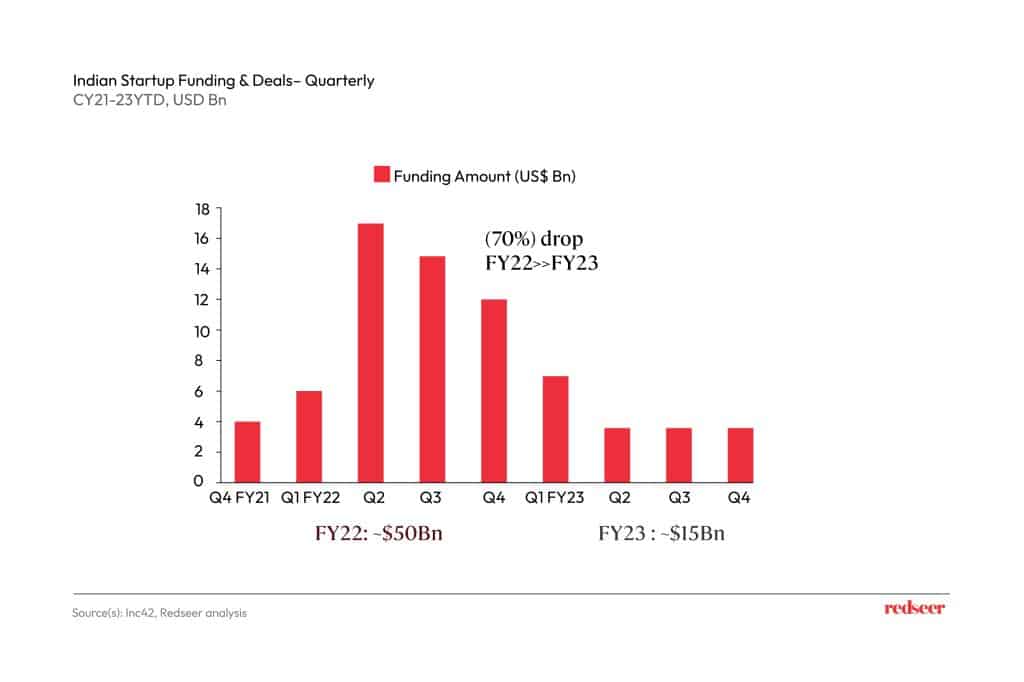
During the brief period of economic tailwinds after the pandemic, startup funding peaked at ~$ 50 Bn in FY22. Subsequently, numerous macro factors brought down the total funding to US$ 15 Bn in FY23. The most significant ones included the global increase in the cost of capital and interest rates and a decline in the value of technology stocks. The recession in developed markets such as the USA and Europe also dealt a blow, while the slowdown in consumer internet growth further contributed to the slowdown. In all, the drop in funding was 70% from FY22 to FY23.
2. Most start-ups are now focusing on expediting their path to profitability
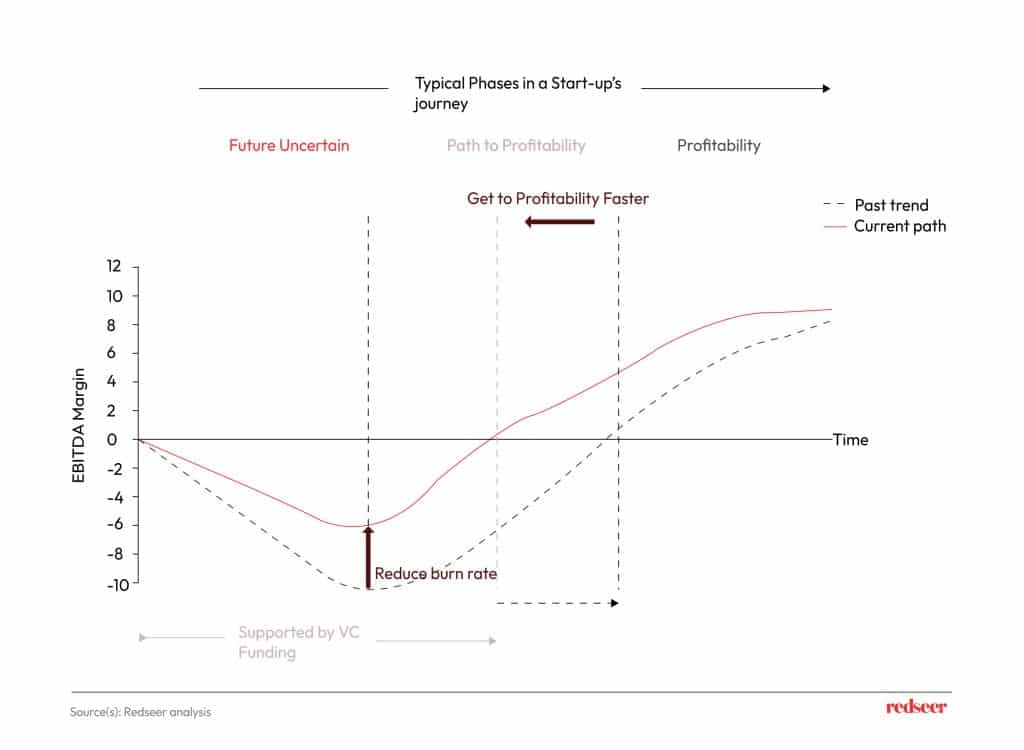
Startups across sectors are engaging profitability levers to shorten their journey towards profitability and reduce burn rate. Listed tech companies have made significant improvements over the last 5 quarters to improve their EBITDA margins. For instance, Zomato increased take rates from restaurant partners and delivery cost recovery from customers. A similar path to profitability is also observed in global companies as well. Airbnb, for example, increased take rates from the guests and hosts, and optimized cost discipline in the workforce and marketing.
3. Our analysis of ~100 unicorns suggest a substantial improvement in profitability
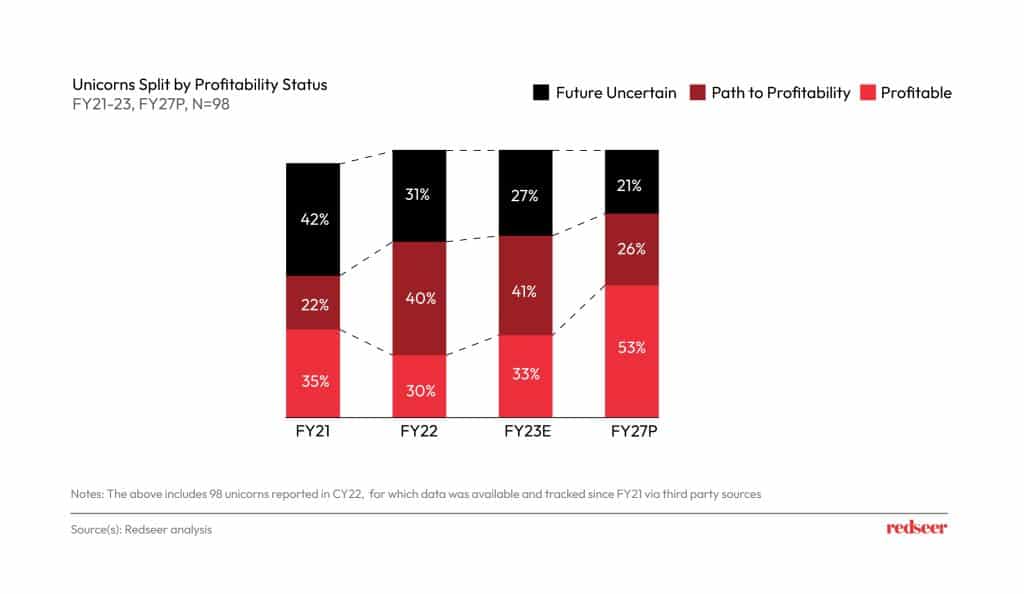
Our analysis suggests that startups have substantially improved their profitability in FY22, with ~50% of unicorns expected to become profitable by FY27. However, ~20% of unicorns are likely to face challenges because of unclear business models, plummeting demand and regulatory roadblocks. Some of these startups would pivot to new models, get acquired, or shut down for good.
It also gets better for the profitable unicorns in India internet, as we expect them to generate 5X as much profit in FY27 compared to FY22. At the same time, we can also expect to see a dip in the loss for unprofitable ventures. However, many of these unicorns too may see a drop in valuations and move to slower growth trajectories to drive profitability.
4. Number of profitable unicorns will grow across most sectors in the near future
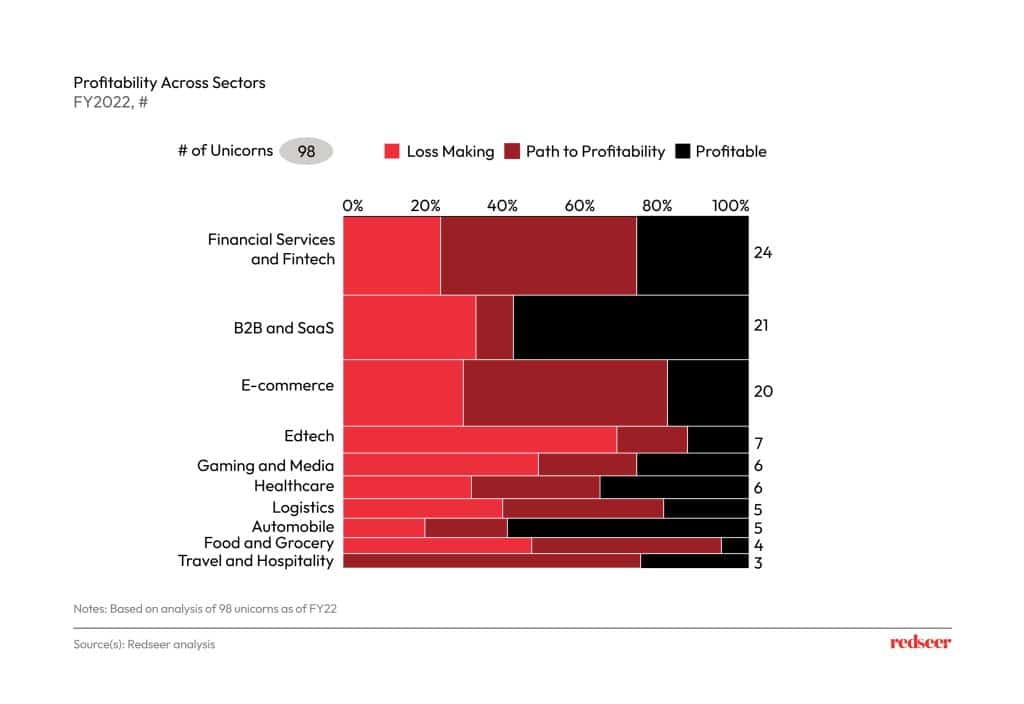
Going forward, we can also expect more profitable unicorns across most sectors. The top sectors expected to drive the most profit in the next 3-4 years is FinTech and Finance Services, B2B and SaaS, and eCommerce.
5. Our work with start-ups highlights multiple levers to improve profitability
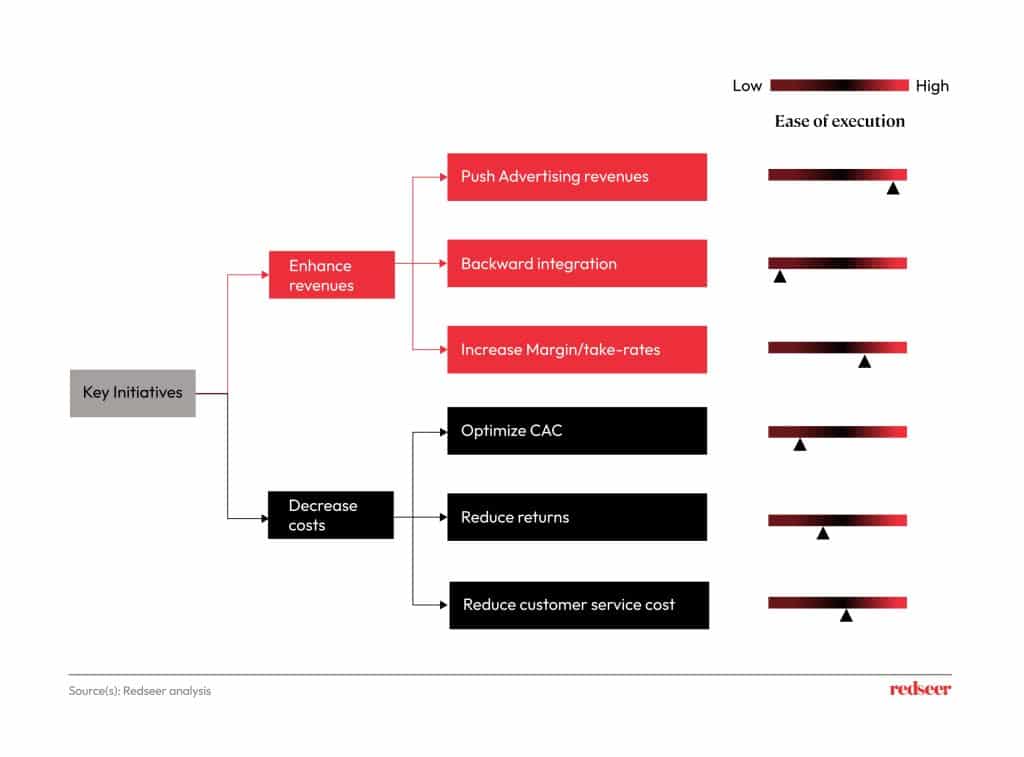
Profitability for startups can be boiled down to enhancing revenue and decreasing costs. Several platform players across sectors are also working on increasing their share of the digital ads market to drive revenue. By FY28, the digital ad market is expected to be US$ 21 Bn, out of which US$ 7-8 Bn would be available for alternative channels such as eCommerce, Gaming, Content, etc.
Players are working on optimizing CAC, which had run up in the heady days of land grab, by detailed analytics around profitable product-market segments and lifetime value.
There is also a wide variation across different players when it comes to customer service cost, which highlights opportunities to reduce costs using specific levers around demand management and cost per query.











